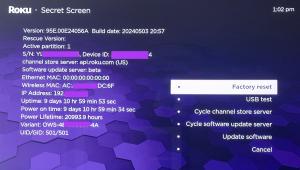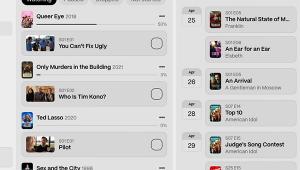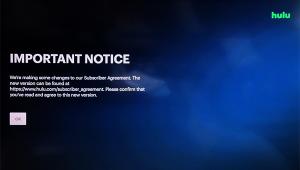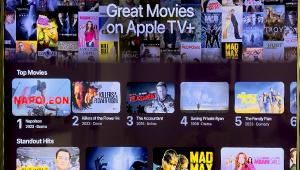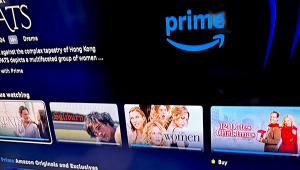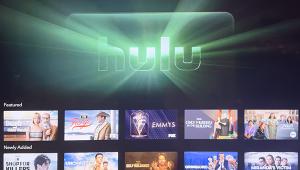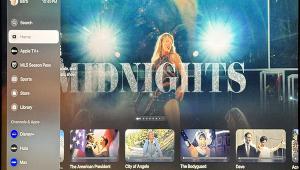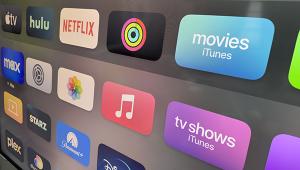For many years I have fought streaming, and the failure of Ultraviolet is part of it. Having lived through the "dot bomb" era of tech, I want to "own" my purchases. The only way to "own" media is to have a physical copy, i.e. CD or DVD. Yes I have over 1000 CD's and 200 DVD's recorded to my ReQuest. I keep it running by purchasing old servers on eBay. Internet or not, I can watch my movies. And yes I did "dump cable" this year but the reality is my bill didn't go down that much.
How Streaming Conquered the World Page 2
Today, a new service doesn’t launch without orignal content. YouTube introduced YouTube Red in 2018 with a lineup of series like the 20-years-later sequel to Karate Kid, Cobra Kai. Users anticipated the 2019 launch of Apple TV Plus and Disney Plus because of the star-studded original programs available on day one.
Niche Streaming
Individual studios and TV networks want a piece of the streaming pie as they take back the streaming rights to their popular shows. The big news in 2012 was when Netflix scored the rights to Disney and Marvel movies. But Disney has taken back their properties as licensing deals end. NBC and WarnerMedia have plans for their own services, which, on January 1, 2020, will pull shows like Friends from the Netflix lineup.
So far, these individual services have had reasonable monthly rates under $10. Still, as we have to subscribe to more streaming services to see our favorite shows, it’ll start adding up, and we will see whether it backfires at some point.
Finding What to Watch
With so much content available for streaming, the challenge of the past decade has been how users can find what they want to watch.
Starting in 2011, users could search for titles using Can I Stream It. The app and web page could display where you could watch popular as well obscure titles. The Mighty TV app launched in 2016 to help make recommendations of shows based on your input of the titles you like. The app died quickly after it was acquired by Spotify. But it was followed in 2017 by Reelgood, which can track your favorite shows and display where to watch even older obscure titles from small and large streaming services.
It’s also become easier to search for a title on devices. Roku offered the first agnostic search in 2014, displaying where to play a title, either for free or as a rental. Apple TV now includes results beyond its own Apple movie rentals and purchases.
Voice Search and Control
I remember how excited I was when the Xbox One with Kinect was released at the end of 2013. It offered the ability to not only search for titles or launch apps, but also to fully navigate through menus without ever having to pick up a remote control. As the Kinect lost popularity, the Xbox voice control was lost and ultimately replaced by Amazon's virtual assistant, Alexa.
Voice remote controls allowed for limited voice commands and search capabilities. In 2015, Roku released a new remote control with a microphone. The fourth generation Apple TV also released a microphone on its remote to access Siri. These remotes allowed users to search for a title by pressing a button and speaking into the remote. The remotes also allowed for basic playback commands and the ability to launch apps.
Two years later, Alexa and Google Assistant started integration with Roku and other media streamers to allow for hands-free control without having to pick up a remote control. Voice control is expanding to more devices, including Roku TVs, the Xbox One console, the Dish Hopper, and many other apps.
The Plex App Sums Up the Decade of Streaming Changes
If there is one service that has exemplified the changes of the last decade, it would be Plex. The app aggregated your media libraries, making it easy to stream to an app on many devices and smart TVs. Once difficult to use, it progressed to a menu that found cover-art for your movies and presented them in a grid. Movie Trailers and Extras were matched to your movie library, creating an experience akin to watching a DVD. Cast lists and recommendations were added. Theme music played when you click on a TV show and the next episode automatically plays. All of this in support of the movie titles and TV shows you have downloaded and saved to your personal library. The app then ventured outside of your library offering live TV and DVR functions via the HDHomeRun network tuner. Plex offered users the ability to subscribe to the Tidal high-res music service through the Plex app. Alexa playback control was added and its most recent feature is a free, ad-supported streaming service, starting with a limited number of popular and classic movie titles.
Looking Toward the Future
We enter a new decade where streaming media is in almost every home. Voice control and Artificial Intelligence will make it easier for devices to recommend and find movies and TV shows we want to watch.
As more and more niche streaming services take back their programming, users are certain to fight back, as the cost of subscribing to individual apps starts adding up. Disney has already created a bundle to offer users a deal on the services it owns — Hulu, Disney Plus, and ESPN. Hopefully, other services will partner to offer discounted bundles in the future.
In the past decade, it has become the world where most anything you want to watch is available to stream over the internet, just as my colleague predicted.
- Log in or register to post comments


